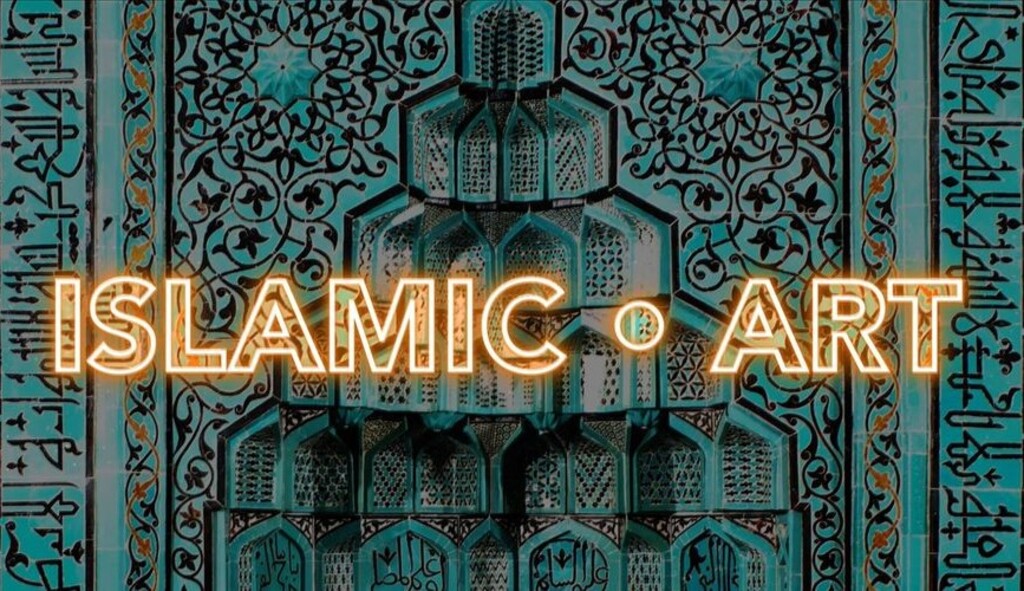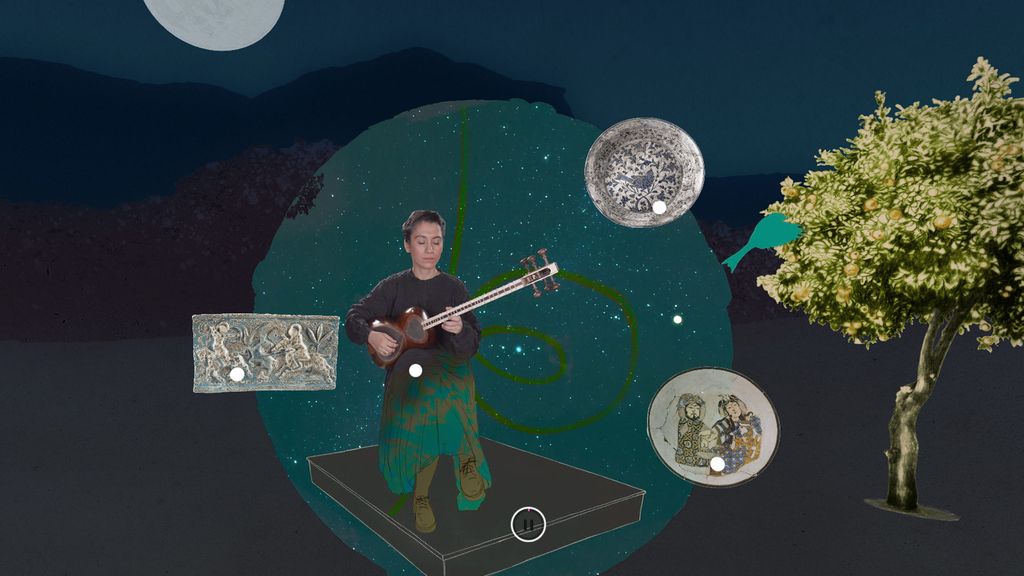"Islamic Art” goes digital

Against the backdrop of a night sky studded with stars, the classical Persian music virtuoso Elshan Ghasimi sits next to an apple tree. With her tar or long-necked lute and deeply engaging voice, she explains how the bowl to the right above her (see image below), decorated with the motif of a small bird, makes her feel. The professional tar player, who's been living in Germany since 2016, sings about the homeless bird's sense of disorientation.
These days, those wishing to experience the art and culture of the Islamic world no longer necessarily have to visit the Berlin Museum of Islamic Art, which houses a diverse range of Islamic artworks spanning centuries and continents.
Located in the upper section of the Pergamon Museum, the museum has created "Islamic Art" – the first online platform in the German-speaking world to present material on Islamic cultures way in German, English and Arabic in a grounded and entertaining way.
From Samarra to DJ Ipek
"Islamic Art" cuts a swathe through space and time. From the Samarra excavation site in Iraq to the carpet collection at Berlin's Bode Museum through to the Alhambra cupola from the zenith of Islamic culture in Andalucia. From the restoration of an almost one-thousand-year-old lustre vase from Kashan in Iran to the 17th-century Aleppo room and the Berlin artist and ethnic Turk DJ Ipek.

The visually engaging and academically solid platform promotes the visibility of the plurality of the Islamic cultural world. Using objects, stories and music, it shows that art and cultural history are only conceivable and relatable in the context of diversity, change, migration and exchange.
The platform, which has been online and continually growing since November 2022, works with four modules. In the section Stories, visitors receive multimedia access to the objects and their stories, from their discovery through to their academic appraisal. Using audio clips, photos and videos, for example, the story "From foreign lands into the mainstream” spotlights the connection between Berlin singer Elif (born in 1992) and the first guest workers, as they were known then, who came to Germany in 1961 after the labour recruitment agreement with Turkey and used music to process their homesickness and experience of racism.
The 360° Tours facilitate multimedia access to a range of topics. Here, in the fictional Mshatta Lounge, the musician Elshan Ghasimi performs alongside the Berlin indie band Bukahara, the Syrian singer Dima Orsho and the Lebanese group Mashrou’ Leila.
In the media library, videos, images, audio material and e-publications tell the stories behind the collections and museum projects, providing personal insights into the work of museum staff.
The Digital Learning module offers a wealth of materials and teaching series, such as the series "Who does music belong to”, which presents ideas on the subject of trans-culturalism and the delineation of borders. The portal is funded by the foundation Alwaleed Philanthropies Global.
"Migration is the mother of all cultures“
The goal of the platform, explains museum director Professor Stefan Weber, is to provide as many people as possible, whatever their educational background, with the opportunity to discover Islamic cultures in a way that encourages appreciation of their diversity. And this should happen both on-site at the museum itself, and off-site in schools and youth clubs as well as online in digital media.
"There’s alarmingly little knowledge of Islamic cultural history and when it does exist, it’s often subjectively distorted in the case of non-Muslims; and in the case of Muslims sometimes ahistorically glossed over,” says Weber. Yet such knowledge of Islamic culture is crucially important for our manifold society, fostering a sense of togetherness and belonging.

The museum is concerned with stories, their message for us today, and with a rich cultural legacy, he says. After all, numerous cultural developments in Islamic societies of the pre-modern era – one of the most important interfaces of global cultural history between the Middle East, Africa, Europe, Central Asia, India, the Far East and, above all, China – influence our lives to this very day, explains Weber.
Another of the platform’s aims is to counteract growing levels of hatred against migrants and Muslims, he says. "Those who realise that their own cultural self isn’t possible without ‘others’ develop a more robust stance against extremist positions,” Weber continues.
“Migration is the mother of cultures, cultural diversity its breeding ground, cultural appropriation its motor. Those who know that the guitar originated in the Middle East; that paper, chess, the decimal system and so much more came to Europe and many other places via the cultural highway of the Islamic world, already possess a degree of openness,” Professor Weber adds.
Engaging classroom material
Miriam Kurz is a research assistant at the museum responsible for the Digital Learning module. The platform offers subject classification, short video presentations, handouts and source compilations on various topics for teachers and educationalists working in the extracurricular domain.
It also provides specialist expertise to publishers of schoolbooks. Fundamental to this, Kurz explains, are questions like "How do German schoolbooks tackle the wide-ranging subject area of Islam? How does this impact peoples’ mindsets and how are debates on Islam and integration conducted in Germany? What stereotypes are perpetuated in school literature?”
With this teaching material, funded by the German government’s Commissioner for Culture and Media (BKM), the platform aims to counteract the inaccurate and poorly researched information still doing the rounds in many places. The material caters to a variety of subjects and age groups and is aligned with framework curricula for tuition in schools.
It also goes above and beyond subjects related to religion, such as the module on mosques and mosque architecture. "For example, the module ‘Calligraffiti’ shows: calligraphy is a very broad subject area in Islamic art that can be associated with modern forms of expression like graffiti," says Kurz. The platform covers a whole spectrum of themes such as gender, migration, marginalisation, human rights and the environment, subjects that continue to be relevant today, which everyone can identify with, she continues.
"It was important to us to show this diversity and generate an awareness that Islamic art and cultural history can be associated with many things. It’s not all about veils or religious practice or rows over co-ed swimming lessons,“ says Kurz.
With its complementary sections, the online portal "Islamic Art“ opens its doors to a wide range of visitors, inviting them to be led by their interests and curiosity into the world of cultural exchange.
© Qantara.de 2023
Translated from the German by Nina Coon